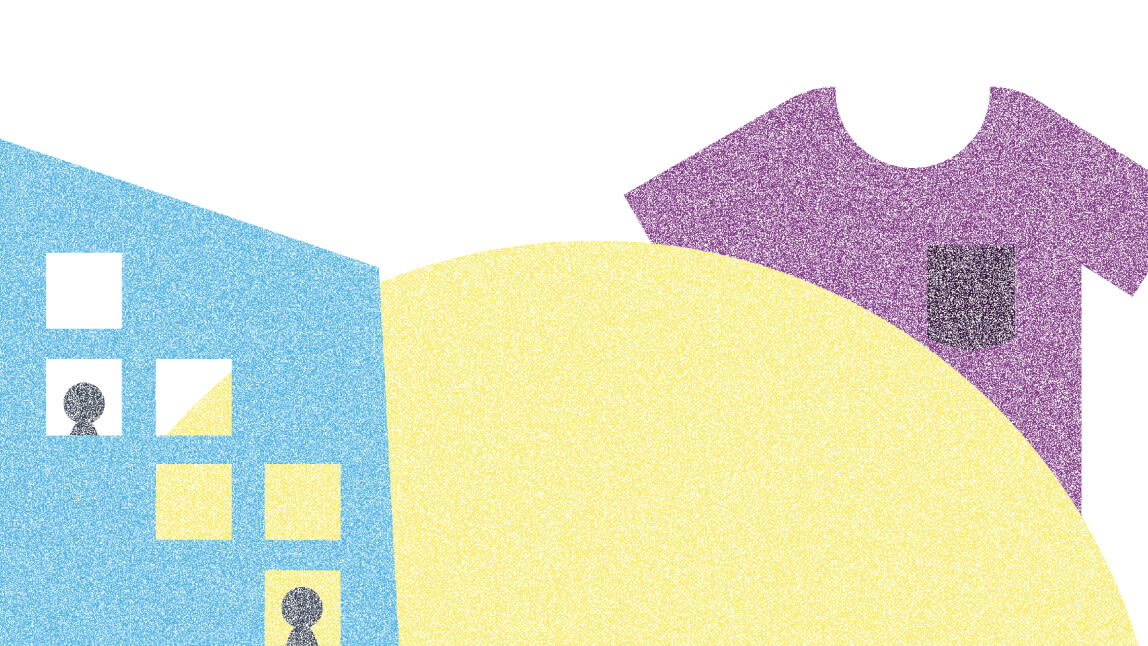A circular economy becomes real when you can touch and see it every day in your local neighbourhood.
Place-based circular economy projects that are made for and with local communities make the circular economy tangible - something that can be experienced in real life. At the neighbourhood level, new circular economy approaches can be tested and iterated. Funding, resourcing and governance needs are lower than citywide or regional programmes. And local people reap the benefits: circular neighbourhoods create jobs, improve access to nutritious food, and connect communities.
Despite occupying just 3% of global land, cities currently consume 75% of global resources and produce 60-80% of greenhouse gas emissions. This concentration gives urban centres a wealth of opportunities to move to a circular economycircular economyA systems solution framework that tackles global challenges like climate change, biodiversity loss, waste, and pollution. It is based on three principles, driven by design: eliminate waste and pollution, circulate products and materials (at their highest value), and regenerate nature., while addressing these issues and creating more resilient, liveable, and thriving cities.
Focusing on distinct neighbourhoods and communities within cities can be a powerful leverage point to establish multiple projects and demonstrate the circular economy in action. A neighbourhood is large enough to represent community behaviour and interactions with urban systems, but small enough to set clear project ambitions and mobilise local stakeholders such as citizens, community groups and local traders.
A neighbourhood is large enough to represent community behaviour and interactions with urban systems, but small enough to set clear project ambitions and mobilise local stakeholders such as citizens, community groups and local traders.
What is a neighbourhood?
A neighbourhood is both a place and its people. As a place, the neighbourhood includes the infrastructure and buildings, the public and green spaces. The people include residents, workers and visitors of all ages, genders, races and abilities, and with different needs.
- C40 and Arup, Green and thriving neighbourhoods
Neighbourhoods took on an increased importance in daily life during the Covid lockdowns, as local streets and parks became the backdrop for the only possibilities of exercise and actual human (if distanced) connection. Community support groups sprang up on social media, allowing neighbours to help one another, and people increasingly opted for locally grown food. Taken together with the rise of remote working, these trends have increased policy support for the 15-minute city concept – where residents can access everything they need within a short walk or cycle ride from home.
Circular neighbourhoods work in parallel to these phenomena while empowering people to grow, share, repairrepairOperation by which a faulty or broken product or component is returned back to a usable state to fulfil its intended use. or pass on products and materials within their own communities.

Neighbourhood-level projects carry distinct advantages compared to citywide initiatives. The smaller scale makes projects easier to implement - logistically, financially and socially.
A neighbourhood can operate as a ready-boundaried pilot to trial new technologies and partnership arrangements. Governments, organisations and citizens can test, iterate and evaluate multiple solutions in one place, and closely observe how these projects interact with and mutually reinforce each other. By demonstrating the benefits of the circular economy in real life, these local projects can also attract further funding from public and private sources.
But even more powerful is the tangibility of neighbourhood projects, allowing people to experience first-hand the benefits of the circular economy transition. In the midst of global challenges like climate change and pollution that can feel overwhelming in their complexity and magnitude, there is great power in taking community-level action. It’s essential therefore that circular neighbourhood projects involve local communities and are informed by their wants and needs; taking this bottom-up approach can also give circular initiatives greater staying power as residents understand their value.
“Our homes, streets and neighbourhoods bring together the big picture, our bold goals, expansive dreams, immediate everyday challenges and opportunities, as well as the experience of crisis, mutual aid, and real barriers to overcome, which manifest in a way that we can interact with, share in and feel the effects of as neighbours.”
Defining a circular neighbourhood
A circular neighbourhood aims to embed circular economy principles in all economic activity that takes place within it.
Waste and pollution is eliminated, products and materials are circulated within the local economy, and natural systems in and around the local environment are regenerated, underpinned by a transition to renewable energyrenewable energyEnergy derived from resources that are not depleted on timescales relevant to the economy, i.e. not geological timescales. and materials.
The smaller scale and lower level of financing needed for circular neighbourhoods allows for more responsive governance, making space for innovation.
Compared to cities, it is easier to monitor neighbourhood-level activities, identify challenges, needs and opportunities, and make adaptations. This makes it possible to quickly test emerging approaches from communities, policymakers and businesses.
Circular neighbourhoods feature active participation and collaboration between businesses, communities, and the local government.
Circular neighbourhoods are defined by the many opportunities for partnerships, collaboration, and community engagement.
They are built around local residents’ knowledge, needs and barriers, and lead to distributed skills development, upskilling, and job creation.
Wealth and other forms of value are widely and fairly distributed, and business models develop skills and knowledge in local contexts so that all residents can be part of the transition.

Circular neighbourhood example: Augustenborg, Malmö
Augustenborg is a suburb in the Swedish city of Malmö that is well-known for its botanical roof gardens that are impressive in their size and ingenuity. Just over 11,000 square metres of green roofs contain a lush variety of vegetation and small hills to provide wildlife habitats, while a novel stormwater management system channels rainwater away from the sewage system via a 6km maze of waterways and ponds. The result is a 50% leap in the biodiversity of the neighbourhood over the twenty years since they were introduced.
The gardens are the best-known and most tangible aspect of the Augustenborg project, attracting a constant stream of visitors from across the world keen to replicate them in their own cities. But the neighbourhood also features a range of facilities aimed at eliminating waste, circulating products and materials at their highest value, and regenerating nature – the three pillars of a circular economy – all complemented by liberal use of solar and wind power.
Read more
The project was an early adopter of communal reuse and recycling initiatives, as well as composting, which subsequently led to the creation of a biogas production pilot. It’s a test bed for new innovations like ‘onion’ gutters that reduce the odour from waste water by increasing oxygenation, and a biofilter that removes contaminants from it.
The neighbourhood has a strong sense of social cohesion, thanks to its shared spaces and activities including community gardens, balconies and greenhouses for growing food, and beehives. It is also home to a new, modular school built using natural recyclable materials with features including a sedum roof, ground source heat pump, solar thermal panels, wind power plant, and composting toilets that turn sewage straight into compost for the soil (thanks to a troupe of worms). Children in this neighbourhood receive a highly sensory education in material flows.
Augustenborg is one of the longest-established examples of an urban circular neighbourhood – a microcosm of circular economy activity within a city that can act as a beacon of inspiration and practical ideas for a better way of living, to communities both within and around it. When Augustenborg was first renovated in 2001, the planners’ primary aim was to address the pressing issue of regular flooding. But in the process of its growth, Augustenborg has in effect evolved into a circular neighbourhood, as residents and planners have realised the value of keeping materials revolving within its spaces, sharing resources, and living in ways that benefit nature.
Circular neighbourhoods are living, breathing places that develop as their inhabitants fashion an ecosystem that flexes to their needs. Augustenborg’s innovations have largely been designed and set up by the residents themselves, with 20% of the 3,000 residents getting involved. As well as the car-pool scheme, it was inhabitants who came up with the stormwater solution system, community gardens, and an after-school centre that teaches children how to look after small animals. This evolution with and for the community is central to the resilience of this circular neighbourhood. Furthermore, it has acted as a test-bed for trialling new approaches that have been rolled out elsewhere: the biogas fuelled car-pooling scheme and solar energy project have now both been expanded to the rest of Malmö.

Next up: the benefits
A circular economy brings about many positive outcomes - not least the opportunities to boost biodiversity by freeing up land for nature, and tackle the carbon emissions generated by industry, agriculture and land use that make up 45% of all greenhouse gas emissions.







